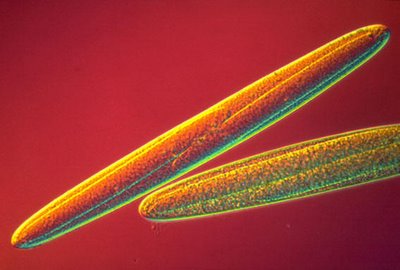How to find microbes that make Gold.
The production of microbial products is a huge global industry with many billions of dollars of products sold world wide that are originally derived from microbes. There is much scope to add new bioproducts to that list.
It requires innovative thinking, a good bioproduct discovery strategy, and alertness to opportunities that you might come across while you are reading about biology, science, and business.
Remember, during your searches for bioproduct candidates, the success of French microbiologist Louis Pasteur, who is famous for observing that fortune favours the prepared mind.
Some general approaches and ideas for discovery of novel bioactive compounds from microbes are:
Pundit is going to add useful hyper links to this list to expand this information.
But why not help the Pundit and put your questions and comments about them below so we can discover good ideas by dialog.
For example, answer this question I'm putting forward to start you thinking about useful approaches:
How are sensitive and specific assays helpful to the bioproduct discovery process, and can you think of particular opportunities they open up?
There is plenty of helpful general reading that can help you prepare for the task of exploiting microbial novelty:
It requires innovative thinking, a good bioproduct discovery strategy, and alertness to opportunities that you might come across while you are reading about biology, science, and business.
Remember, during your searches for bioproduct candidates, the success of French microbiologist Louis Pasteur, who is famous for observing that fortune favours the prepared mind.
Some general approaches and ideas for discovery of novel bioactive compounds from microbes are:
- Tap into microbial biodiversity
- Search for novel organisms
- Be alert to microbial culture and enrichment concepts. These include using indicator agar plates, for example containing enzyme substrates that change colour during a reaction.
- Search in novel or extreme microbial environments.
- Find and grow previously unculturable organisms.
- Find compounds through gene cloning (metagenomics) from organisms that cannot be grown. see eg How to Find New Antibiotics, Jo Handelsman, The Scientist Volume 19 | Issue 19 | Page 20 | Oct. 10, 2005
- Exploit suitable assays or screens to find novel biological activities. eg Coloured compounds produced by microbial colonies are easier to find than colourless compounds. Similarly substrates that produce colour (chromogenic compounds) or fluorescence (fluorogenic compounds) by a chemical reaction are extremly useful if a relevant or practically useful way of exploiting a reaction can be devised.
- It's possible to find a novel microbe to make or provide a useful biological activity previously unknown in microbes using a well chosen assay.
- Exploit specific or sensitive assay approaches.
- Possibly identify a novel "drug" target to help develop an assay.
- Use a high through-put assay or screening approach ( eg screens of millions of colonies on plates, screens in microtitre dishes).
- Screen pools of different compounds or microbes in the one assay to find which pool has the posive microbe.
- Use of chemical analysis techniques such as Mass spectroscopy, in innovative ways to allow high through-put detection on novel molecules
- Encapsulate individual cells or samples in polmeric microscopic beads to facilitate screening
Pundit is going to add useful hyper links to this list to expand this information.
But why not help the Pundit and put your questions and comments about them below so we can discover good ideas by dialog.
For example, answer this question I'm putting forward to start you thinking about useful approaches:
How are sensitive and specific assays helpful to the bioproduct discovery process, and can you think of particular opportunities they open up?
There is plenty of helpful general reading that can help you prepare for the task of exploiting microbial novelty:
- Pages 26- 32 of The textbook Microbial Biotechnology by A.N. Glazer and H. Nikado, Freeman, 1995 are a good short introduction to some previously discovered microbial bioproducts such as plastics and drugs.
- Chapter 15. of Microbe, M. Schaechter et al ASM Press 2006 is very good background reading about bacterial diversity.
- Several previous posts at this site deal with compounds, such as siderophores, that are produced by soil streptomycete bacteria (these posts are readily accessible via the index hyper-link in the side-bar on the right.)
Labels: Discovery, Diversity, Innovation, Questions

